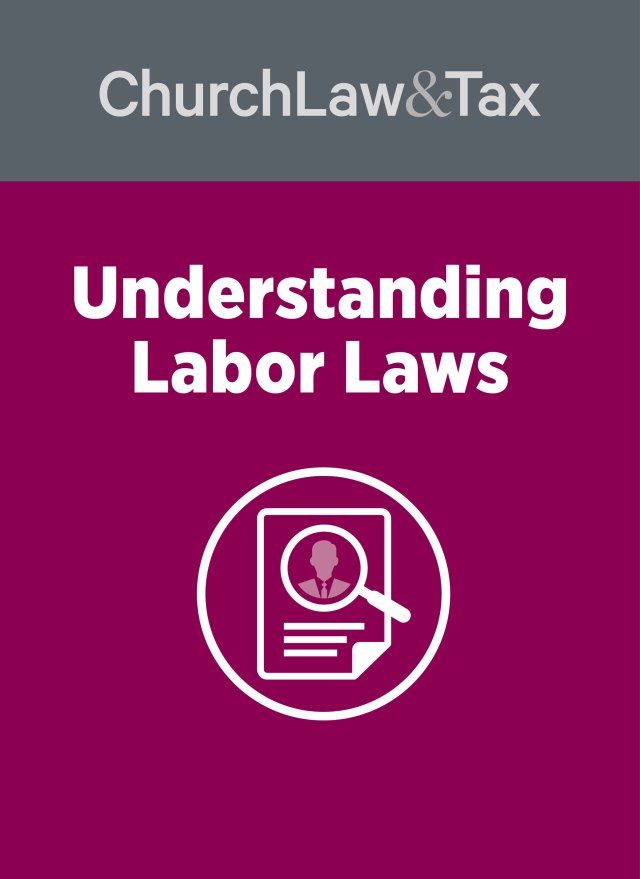While “employment at will” is a phrase most church leaders have heard, not everyone knows what it truly means.
The employment at-will rule means an employment relationship is indefinite. It also means it can be ended by the employee or employer at any time.
The rule is a presumption courts use that employment may be ended without notice and without consequences. Unless, of course, the employer and employee have agreed to a different type of arrangement.
We often think of the rule from the perspective of the employer’s right to discharge a worker at will. It may be helpful to understand it from the employee’s perspective. A worker may walk away from a job at any time, for any reason or no reason.
Perhaps, at one time or another, most of us have felt like doing just that. If so, we had no reason to worry whether our employer would try to sue us for quitting.
So, is everyone employed “at will”? Again, the law presumes so, but the parties can voluntarily change that. The simplest way to do that is in a contract. In addition, federal and state laws that protect employee rights undercut the strength of the at-will rule, as discussed below.
Explicit contract limitations
A candidate might accept a job offer on the condition that it will last at least two years.
If the employer agrees and makes that promise, the parties will have negated the at-will presumption.
Consequently, if the employer releases the employee after just six months, the employee could bring a claim for damages.
Other types of contract provisions also limit the at-will arrangement.
Contracts with high-ranking employees (in the ministry context, say, a senior pastor) often contain a “just cause” provision. This means the employer can release the employee for “just cause.”
“Just cause” is sometimes left undefined. Other times it refers to specific types of misconduct or other events.
In the context of contracts, a just cause provision often simply helps determine if severance benefits are owed.
If any employee is discharged for “just cause,” it means they may not be entitled to severance benefits.
As another example, a deferred compensation agreement between a church and pastor might include a provision under which compensation is forfeited if the pastor engages in specified misconduct. Ultimately, the parties’ obligations depend on the language of the contract they negotiate.
As a caution, it is important that contract provisions regarding “cause” for termination are carefully drafted to avoid unnecessary conflict that might arise from ambiguities. For such provisions, employers should seek guidance from an attorney with expertise in labor and employment law.
Implied contract limitations
Contracts that abrogate the at-will presumption might not always look like formal, written agreements bearing official signatures. Though many might not realize it, employment policies and handbooks can create contracts between an employer and its workers. If so, the employer must abide by the agreement.
Policies that describe an employer’s procedures in unambiguous, mandatory language (e.g., “shall” or “will”) may be deemed binding, and deviation from the promise can be a breach of contract. For that reason, policies and handbooks should explicitly disclaim that they constitute a promise of employment for any certain period of time or restrict the bases for discharge. They should also state—up front and in bold language—that employment is at will and that the policy/handbook does not alter that relationship.
Legal limitations
Federal and state laws have significantly eroded the force, if not the letter, of the at-will rule. Countless statutes prohibit the discharge of an employee (at will or not) if the employer acted for an illegal reason.
For example, while a church employer may discharge a 65 year-old worker at the employer’s will (assuming it did not enter a contract with the worker), it usually may not do so if the reason is the worker’s age. (Small employers, however, may not be covered by age discrimination laws.)
The same is true for other protected characteristics (e.g., race, gender, disability) or protected conduct (e.g., blowing the whistle on fraud, filing a claim for workers’ comp, refusing to engage in illegal conduct, or opposing discrimination). Those protections differ from one state to the next. Church leaders should check their state’s law in these matters.
Keep in mind that religious groups may have a defense to statutory and other employment claims by virtue of the ministerial exception.
Practicalities
Assume that a recently discharged at-will worker sues over the termination. Logically, the employer should be able to argue that it does not need to give any reason for discharging the worker because he or she was employed at will. But here is where the at-will rule is sometimes misunderstood.
At-will employment does not mean that the employee is barred from pursuing a lawsuit against the employer. It only means that the employer and employee haven’t agreed between themselves to limit either party’s right to end the job relationship.
Indeed, in practical terms, employers must always be prepared to articulate a legitimate reason for discharging a worker. In a sense, that is not an undue burden: there always will be a reason for the employer’s decision—say, the employee isn’t performing well or the employer didn’t need or couldn’t afford to keep the worker.
On the other hand, because there are so many employee protections under federal and state laws, nearly any employee who believes he or she was unfairly discharged has a basis for filing a complaint. The moral of the story here is that at-will workers have every right to contest their discharge in court.
Note that some states liberally allow employees to file lawsuits challenging disciplinary actions less severe than a discharge, such as a demotion. Again, church leaders should check their state’s law in these matters.
All in all, an employee’s at-will status provides limited protection for employers. Accordingly, employers should not expect the at-will rule, although a highly touted staple of American employment law, to offer a reliable defense if an employment claim arises.
Adapted from an article that first appeared in the Employment Law for Ministries newsletter from Conner & Winters. Used with permission.
Donn Meindertsma is a partner in the Washington, D.C., office of Conner & Winters, LLP, and specializes in employment law.





